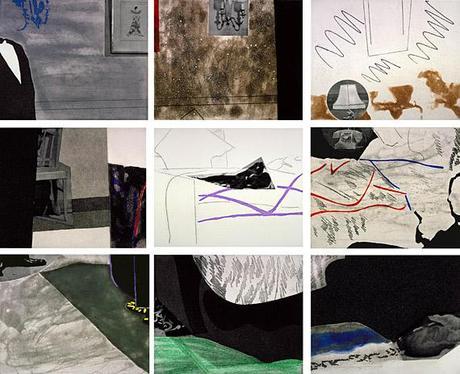Multiplicity opened at the Smithsonian American Art Museum on November 11 and runs to March 11, 2012. Georgina Goodlander asked the curator, Joann Moser, a few questions about the exhibition.

John Baldessari, Black Dice, 1982, nine prints, color aquatint, photo etching, soft-ground and lift-ground on paper, Smithsonian American Art Museum, Museum purchase, © 1982 John Baldessari/Peter Blum Edition
Eye Level: Can you explain what you mean by Multiplicity?
Joann Moser: Multiplicity has many different meanings in the context of this exhibition. All the works of art are editioned prints or multiple originals. Many of them are multipart works: series, sequences, several sheets that comprise a single image, successive images in an artist’s book. Multiplicity also refers to the variety of artists, styles, and printmaking techniques included in this selection of prints.
The term also refers to the way several of the prints were made. In Chuck Close’s Self-Portrait, for example, the final image was created by the successive printing of more than 100 screens. From a distance the image looks almost like a photograph, but as you approach The print, it breaks up into a grid of small, colorful abstractions that together create the final image.
Another aspect of "multiplicity" is the fact that all but one of the prints was made by the artist in collaboration with a professional printer; more than one person was involved in the execution of the final print.(Lou Stovall is a professional printer as well as an artist, and he printed his own work.)
EL: Many of the works in the exhibition are new acquisitions. Are there any that you are particularly excited about?
JM: I really have no favorites. I have acquired every one of the prints for the collection, so asking me to choose is like asking me to select my favorite child! I can tell you that the most recent acquisition is a series of 41 prints by R. Luke DuBois, titled Hindsight is always 20/20. Two of these are on view in the exhibition, but you can see all of the images online.
EL: What can visitors expect when they visit this exhibition?
JM: The selection of prints presents an overview of American art of the past three decades. Many of the leading artists, styles, ideas are represented. What I tried to present are some of the most interesting, intriguing, and visually stimulating prints that serve as a touchstone for the vitality of American art.
EL: Can you tell us a bit about the DC printmakers that were in the panel discussion on November 16?
JM: The artists represent three different generations, with Lou Stovall the oldest and Linn Meyers the youngest. Lou is the only professional printer in the exhibition; all the others worked with printers in workshops. The work by Michael Platt is the only digital print in the show. Both Andrea Way and Linn Meyers primarily do drawings, large, intricate, and finished drawings. The four participants represent a wide range of styles, and it is great to be able to highlight local artists in this way.
EL: Is there anything else you want readers to know about the exhibition?
JM: Printmaking is alive and well in the United States!

